#knysnaheads #coastalwonder #knysnaguide #southafricatravel #natureexploration #travelinspiration #oceanviews #adventuretravel #exploreknysna
Introduction to Knysna Heads
Knysna Heads is a mesmerizing coastal wonder located in Knysna, South Africa. These majestic geological formations consist of two massive sandstone cliffs that guard the entrance to the Knysna Lagoon, creating a stunning natural gateway between the ocean and the lagoon. The beauty and significance of Knysna Heads cannot be overstated.
The towering cliffs serve as a visual testament to the power of nature, with their rugged facade and dramatic presence drawing visitors from far and wide. The panoramic views from the top of the Heads offer breathtaking vistas of the surrounding landscapes, including the sparkling blue waters of the Indian Ocean.
Aside from its striking visual appeal, Knysna Heads also holds historical importance. It has been a crucial landmark for sailors navigating through treacherous waters for centuries. Today, it remains a popular destination for tourists seeking awe-inspiring natural beauty and outdoor adventures.
Exploring Knysna Heads means immersing oneself in a world where nature’s grandeur meets historical significance, making it an experience not to be missed for any traveler visiting the Western Cape region of South Africa.
Knysna Heads: A brief overview
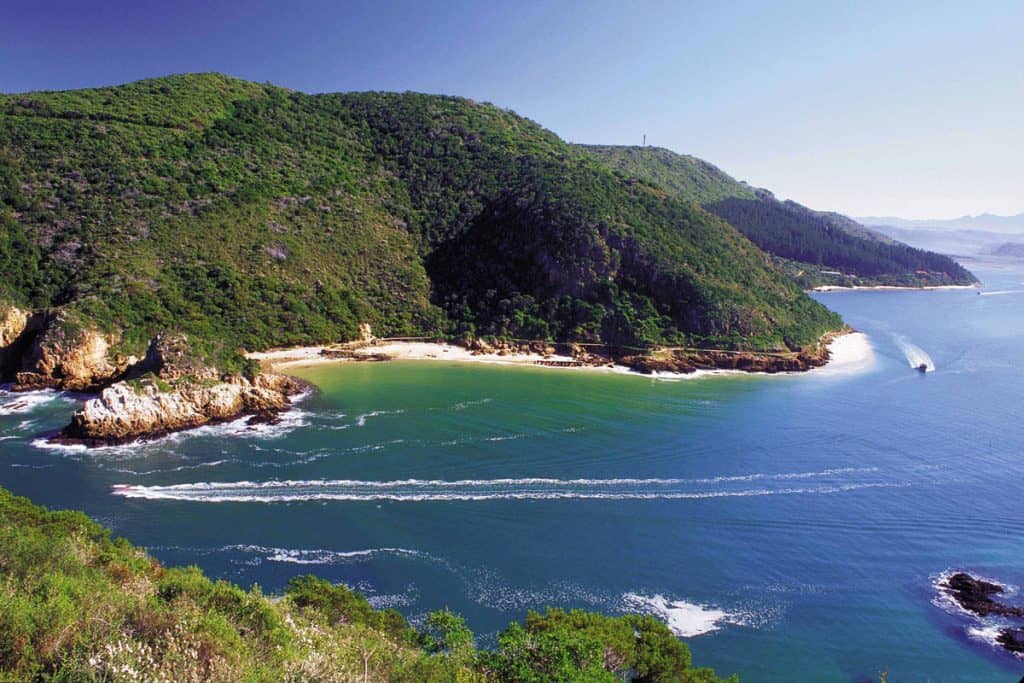
Knysna Heads, located in Knysna, South Africa, are two imposing sandstone cliffs that form a natural gateway between the Indian Ocean and the Knysna Lagoon. These massive geological formations have captivated visitors for centuries with their grandeur and majesty.
The East Head and West Head are the two main sections of Knysna Heads. The East Head offers stunning views of the lagoon and surrounding lush landscapes, while the West Head provides a rugged coastal experience with breathtaking ocean vistas.
These iconic cliffs hold not only visual appeal but also historical significance, serving as vital navigation markers for sailors in the past. Today, Knysna Heads remains a popular destination for tourists seeking awe-inspiring beauty and adventure opportunities.
With panoramic viewpoints, walking trails, and opportunities to spot wildlife, exploring Knysna is an unforgettable experience that combines nature’s splendor with historical charm. Whether you’re an outdoor enthusiast or simply appreciate natural wonders, Knysna Heads should be on your itinerary when visiting South Africa’s Western Cape region.
The significance and natural beauty of Knysna Heads
The Knysna Heads hold great significance, both in terms of natural beauty and historical importance. These awe-inspiring sandstone cliffs serve as a dramatic gateway between the Indian Ocean and the Knysna Lagoon. For centuries, they have captivated visitors with their grandeur and majesty.
Apart from their visual appeal, the Knysna Heads have played an essential role in navigation. Sailors relied on these imposing formations to guide them safely through the treacherous entrance to the lagoon. The iconic cliffs continue to be prominent landmarks today.
In addition to their historical significance, the natural beauty surrounding the Knysna Heads is breathtaking. Visitors can take in the lush surroundings and the lagoon’s glistening waters from the panoramic viewpoints. The rugged coastline and crashing waves at West Head further enhance this natural wonder, making it a must-visit destination for those seeking adventure and serenity amidst stunning scenery.
How to Get to Knysna Heads
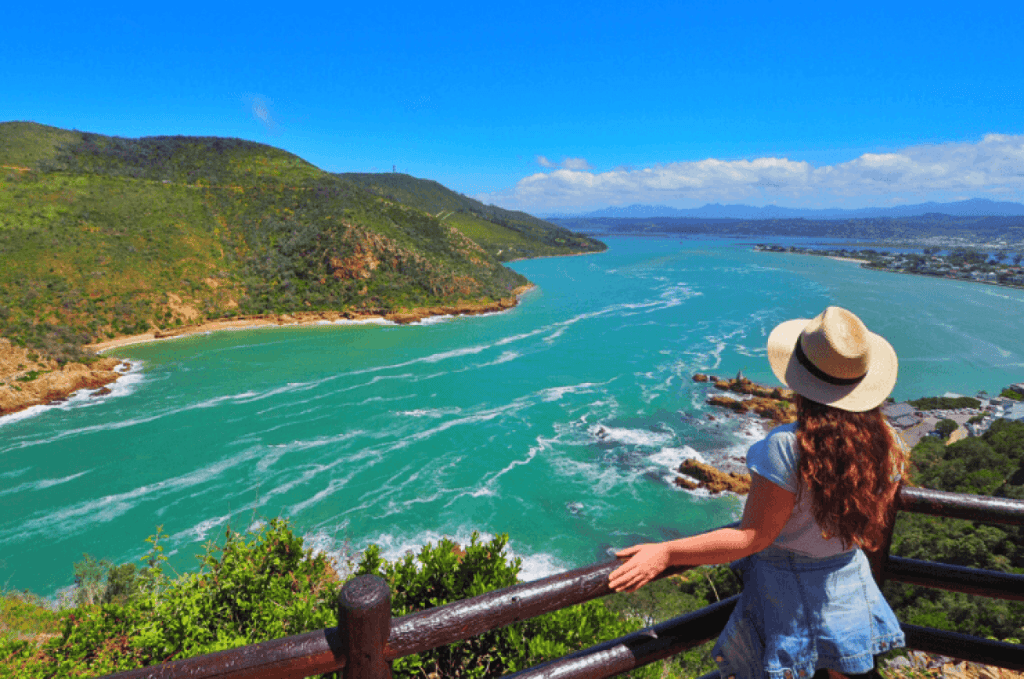
Getting to Knysna Heads is relatively easy, thanks to its convenient location and accessibility. To reach this coastal wonder, visitors can follow the N2 highway from either Cape Town or Port Elizabeth.
Once in Knysna, there are several transport options available. For those traveling by car, ample parking is available near the Heads, allowing for a stress-free visit. Alternatively, taxis and rideshare services can also be used for transportation.
For those without access to private transportation, organized tours and private shuttle services are popular options. These services often include round-trip transportation from nearby towns and provide a hassle-free way to experience the beauty of the Heads.
No matter the mode of transportation chosen, visitors will find that reaching Knysna Heads is a straightforward journey that rewards them with stunning views and unforgettable experiences.
Directions to Knysna Heads
To reach Knysna Heads, visitors can follow the N2 highway either from Cape Town or Port Elizabeth. Once in Knysna, finding the heads is easy, with clear signage and directions available along the way. From the city center, simply take George Rex Drive and continue straight until you reach the turnoff for East Head Viewpoint and West Head Viewpoint. Both viewpoints offer panoramic vistas of the pristine coastline and are well-marked.
For travelers using GPS navigation systems, simply input “Knysna Heads” as your destination, and it will guide you to the correct location.
Once at Knysna Heads, there is ample parking available near both East Head and West Head viewpoints, making it convenient for visitors to explore these breathtaking coastal formations at their own pace. Don’t forget to bring a camera to capture the stunning natural beauty of Knysna Heads!
Transportation options and accessibility
When it comes to reaching Knysna Heads, visitors have a few transportation options available. The most common way is by car or private vehicle. Travelers can easily navigate their way to Knysna Heads by following the N2 highway, either from Cape Town or Port Elizabeth. Once in Knysna, clear signage and directions guide the way to the Heads.
For those without access to a car, there are also taxi services and tour operators that offer transportation to Knysna Heads. Public transportation options, such as buses or trains, may be limited in this area, so it is advisable to plan ahead.
In terms of accessibility, both East Head and West Head viewpoints are easily accessible, with parking facilities nearby. There are also designated walking trails at each viewpoint, allowing visitors to explore the natural beauty of the area at their own pace.
With these transportation options and accessibility features in place, exploring the majestic Knysna Heads is made convenient for all visitors.
Exploring East Head
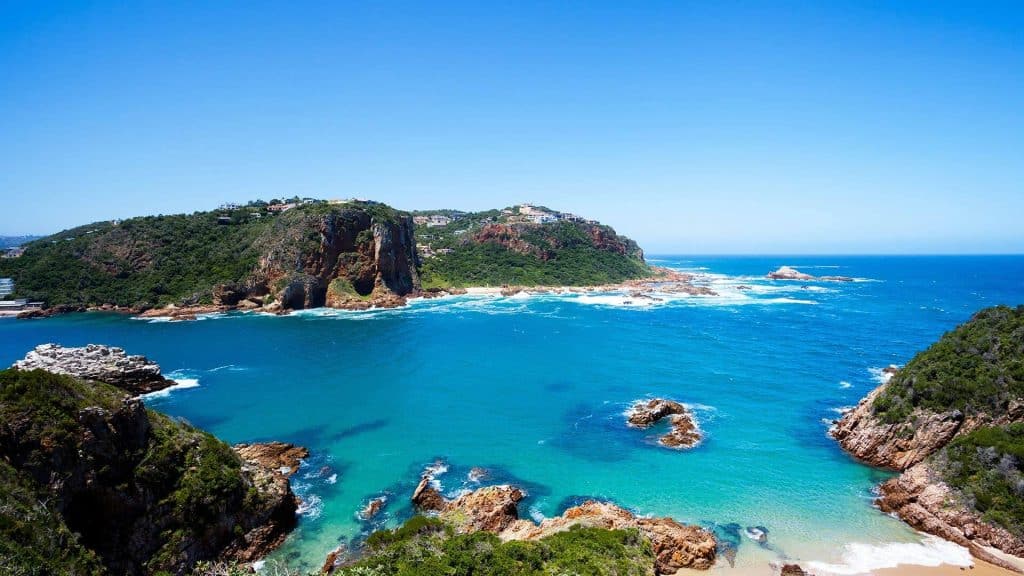
East Head, one of the two massive sandstone cliffs that guard the entrance to the Knysna Lagoon, offers visitors an enchanting experience. With its breathtaking views and picturesque landscapes, East Head is a must-visit destination for nature enthusiasts.
At East Head, visitors can marvel at the panoramic vistas from various scenic viewpoints. The viewpoints offer sweeping vistas of the azure blue waters of the Indian Ocean, contrasting against the rugged coastline. These perfect vantage points provide ample opportunities to capture memorable photographs.
In addition to the viewpoints, East Head also boasts designated walking trails that meander through fynbos-covered hills and indigenous forests. These trails allow visitors to immerse themselves in the natural beauty while being surrounded by diverse plant life and abundant bird species.
Exploring East Head is a fantastic way to reconnect with nature and experience the awe-inspiring beauty of this coastal wonder. Whether it’s enjoying breathtaking views or embarking on a leisurely hike through captivating landscapes, East Head promises an unforgettable adventure for all.
East Head: An introduction
East Head stands as a majestic sandstone cliff, casting its spellbinding charm over visitors to the Knysna Heads. This awe-inspiring natural wonder captivates with its rugged beauty and breathtaking views.
As part of the two towering cliffs that guard the entrance to the Knysna Lagoon, East Head offers a unique perspective of the surrounding coastal landscapes. Its imposing presence against the azure blue waters of the Indian Ocean provides an irresistible backdrop for photographers and nature enthusiasts alike.
The allure of East Head lies not only in its grandeur but also in its serene walking trails that wind through fynbos-covered hills and indigenous forests. These trails offer a chance to immerse oneself in the diverse plant life and abundant bird species that call this area home.
Exploring East Head is an invitation to witness nature’s magnificence up close and connect with the tranquility it exudes. Whether admiring the panoramic vistas or meandering along picturesque trails, East Head promises a truly enchanting experience for all who venture here.
Scenic viewpoints and walking trails
Scenic viewpoints and walking trails at East Head offer visitors an immersive experience of the natural wonders of Knysna Heads. Take in breathtaking panoramic views from various vantage points along the cliffside, allowing you to marvel at the rugged beauty of the coastline and the azure blue waters stretching into the horizon.
Explore the well-maintained walking trails that meander through fynbos-covered hills and indigenous forests, immersing yourself in the serene ambiance of this coastal paradise. Along these trails, you may encounter a variety of bird species and other wildlife that calls this area home. Keep your camera ready, as there are endless photo opportunities for capturing the picturesque landscapes and captivating flora and fauna.
Whether taking a leisurely stroll or embarking on a more adventurous hike, East Head’s scenic viewpoints and walking trails offer an unforgettable experience for nature enthusiasts seeking tranquility and awe-inspiring vistas. Enjoy every step as you connect with nature’s splendor at this coastal gem.
Discovering West Head
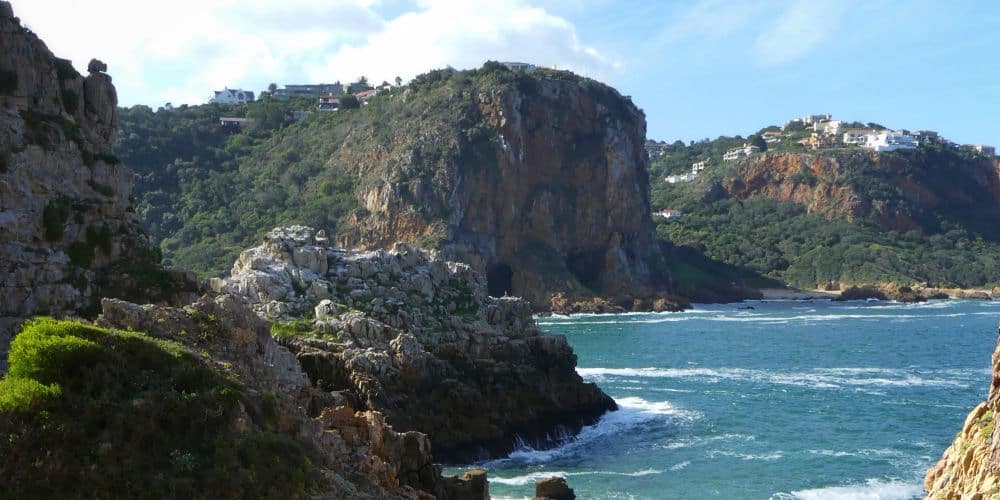
Located across from East Head, West Head is another must-visit destination for nature lovers exploring Knysna Heads. This rugged sandstone outcrop offers a unique landscape with stunning vistas that will take your breath away.
One of the main highlights of West Head is the hiking opportunities it provides. There are several well-marked trails that wind through the coastal forest and fynbos-covered hills, offering visitors a chance to immerse themselves in the natural beauty of the area. As you explore these trails, keep an eye out for the diverse wildlife that inhabits this region, including lizards, snakes, and various bird species.
For those seeking adventure and thrills, there are also rock climbing opportunities on West Head’s cliffs. The challenge of scaling these vertical walls while being surrounded by breathtaking views is a truly unforgettable experience.
Whether you choose to hike or climb, exploring West Head is a chance to connect with nature and experience the raw beauty of Knysna Heads.
West Head: An Overview
West Head is a rugged sandstone outcrop located across from East Head in Knysna Heads, South Africa. This majestic destination offers visitors a unique landscape with breathtaking vistas that will leave them in awe.
One of the main highlights of West Head is its hiking opportunities. There are well-marked trails that wind through the coastal forest and fynbos-covered hills, allowing visitors to immerse themselves in the natural beauty of the area. As you explore these trails, keep an eye out for the diverse wildlife that calls this region home, including lizards, snakes, and various bird species.
For those seeking more adventure, rock climbing opportunities await on West Head’s cliffs. Scaling these vertical walls while surrounded by stunning views is an unforgettable experience that adventurous souls should not miss.
No matter how you choose to explore it, visiting West Head is an opportunity to connect with nature and witness the raw beauty of Knysna Heads.
Hiking opportunities and wildlife spotting
Embarking on a hike in West Head offers visitors an opportunity to fully immerse themselves in the natural beauty of this coastal wonder. With well-marked trails that wind through the coastal forest and fynbos-covered hills, hikers can witness breathtaking views at every turn.
As you traverse these trails, keep an eye out for the diverse wildlife that calls this region home. Lizards, snakes, and various bird species can often be spotted along the way, adding to the enchantment of your journey. The chance to observe these creatures in their natural habitat is a truly special experience.
With its rugged sandstone cliffs and stunning vistas, West Head is also a haven for rock climbers. Scaling these vertical walls while surrounded by majestic scenery is an exhilarating adventure that will undoubtedly leave a lasting impression.
Whether you choose to hike or participate in rock climbing, exploring West Head offers an incredible opportunity to connect with nature and witness firsthand the raw beauty of Knysna Heads.
Activities and Attractions Near Knysna Heads
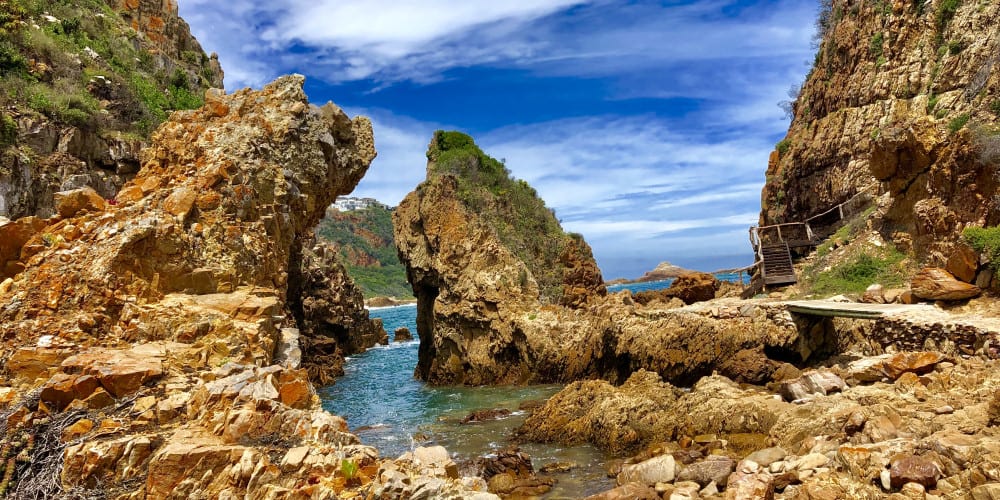
Near Knysna Heads, there are a plethora of activities and attractions to complement your visit. Water enthusiasts can indulge in various aquatic adventures, such as kayaking, paddleboarding, or taking a boat tour to explore the surrounding waters. These excursions offer an opportunity to experience marine life up close and witness the breathtaking coastal landscapes from a different perspective.
In addition to water activities, there are other attractions worth exploring nearby. One notable attraction is the Featherbed Nature Reserve, which offers guided tours through its pristine natural surroundings and provides insight into the area’s rich history and ecology. For those seeking cultural experiences, there are art galleries and craft markets nearby where you can marvel at local talent and purchase unique souvenirs.
When visiting Knysna Heads, keep in mind that the availability of activities may vary depending on the season, so it’s advisable to plan ahead and check with local providers for current offerings.
Water activities and boat tours
Water enthusiasts will find a multitude of water activities and boat tours near Knysna Heads to satisfy their adventurous spirit. Kayaking and paddleboarding are popular choices for those looking to explore the surrounding waters at their own pace. These activities allow visitors to navigate through the rocky cliffs and picturesque coves, providing an up-close view of the stunning coastal landscapes.
For a more guided experience, boat tours are available to take visitors on a journey around Knysna Heads and its neighboring areas. These tours provide an opportunity to learn about the history, geology, and marine life of the region from knowledgeable guides. From spotting dolphins and seals to witnessing magnificent seabirds soaring above, these boat tours offer a chance to observe the diverse wildlife that calls this area home.
Whether you prefer the thrill of paddling through the waves or embarking on a leisurely cruise, water activities and boat tours near Knysna Heads promise an unforgettable experience for all nature lovers.
Other attractions and points of interest
Other than the awe-inspiring beauty of Knysna Heads, there are several other attractions and points of interest in the surrounding area. The nearby Featherbed Nature Reserve offers a unique experience for visitors with its nature trails, stunning views, and fascinating birdlife. For those interested in history and culture, a visit to the Knysna Museum is a must. Here, you can learn about the town’s rich heritage and explore exhibitions that showcase its past.
Food lovers will delight in the various restaurants and cafes located near Knysna Heads, offering delicious seafood dishes and local delicacies. Additionally, art enthusiasts can visit the numerous galleries that feature works by talented local artists showcasing their creativity.
For a more adventurous experience, visitors can take part in activities such as paragliding or bungee jumping, which provide exhilarating thrills against the backdrop of Knysna’s natural beauty.
With so many attractions and points of interest nearby, a visit to Knysna Heads promises an unforgettable adventure filled with nature, culture, flavors, and adrenaline.
Tips for Visiting Knysna Heads
When planning a visit to Knysna Heads, there are a few tips that can enhance your experience. Firstly, it is important to check the weather conditions before going, as wind and fog can impact visibility and safety. It is also advisable to wear comfortable shoes and bring a jacket for unpredictable weather.
Visitors should exercise caution when walking along the cliffs, as they can be steep and slippery. Keeping a safe distance from the edges is essential for personal safety. Additionally, taking sunscreen and water is recommended, as the area can get quite hot during sunny days.
To fully appreciate the natural beauty of Knysna Heads, it is best to explore both East Head and West Head. Each offers different viewpoints and hiking trails that showcase unique perspectives of the landscape.
Lastly, visitors should respect the environment by not littering or disturbing the wildlife. Knysna Heads is a protected area, and by being mindful of our actions, we can help preserve its beauty for future generations to enjoy.
Best time to visit and weather conditions
The best time to visit Knysna Heads is during the months of autumn and spring, which are from March to May and September to November, respectively. During these seasons, the weather is generally pleasant, with milder temperatures and less rainfall.
It is important to check the weather conditions before visiting, as wind and fog can impact visibility and safety. The area can get hot during sunny days, so it is advisable to bring sunscreen and water. In case of rain or inclement weather, it is recommended to reschedule your visit for a clearer day.
Overall, the climate at Knysna Heads is characterized by mild to warm temperatures throughout the year. However, be prepared for changes in weather patterns, as coastal regions can experience sudden shifts in conditions. By being aware of the weather forecast and dressing appropriately, visitors can fully enjoy their time exploring this coastal wonder.

Safety precautions and travel tips.
When visiting Knysna Heads, it is important to prioritize safety and follow necessary precautions. Always exercise caution along the rocky cliffs and refrain from going too close to the edge. The strong currents and unpredictable waves can pose risks, so swimming or water activities near the heads are not recommended.
To make the most of your visit, come prepared with comfortable walking shoes and appropriate clothing for different weather conditions. Pack sunscreen, hats, and plenty of water to stay hydrated during your exploration. It is also advisable to bring binoculars to observe the wildlife from a safe distance.
Ensure that you bring a camera or smartphone to capture the stunning vistas and memories of your experience at Knysna Heads. Don’t forget to check the weather forecast before heading out, as sudden changes in climate can occur. Lastly, respect the natural environment by disposing of any litter properly and following park rules and regulations.
By adhering to these safety precautions and travel tips, visitors can have a memorable and enjoyable experience at Knysna Heads while ensuring their well-being.


